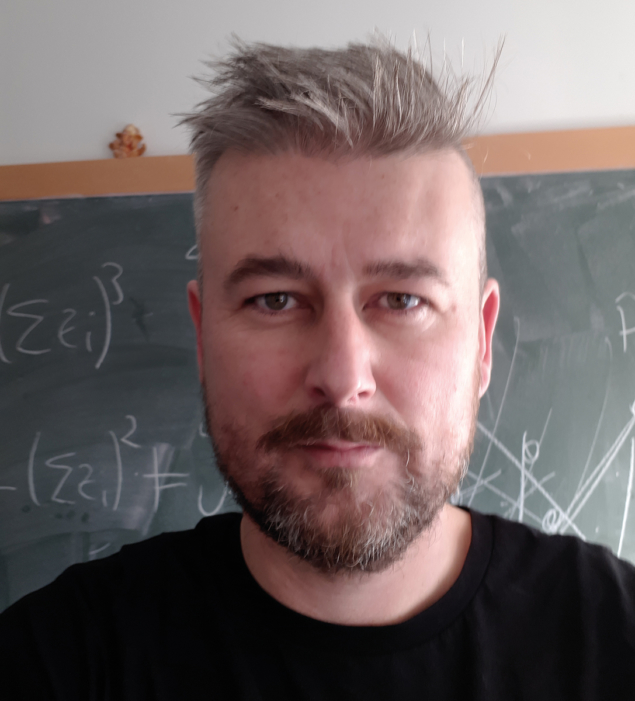The 2020s will sort current anomalies in fundamental physics into discoveries or phantoms, says Ben Allanach.

Anomalies, which I take to mean data that disagree with the scientific paradigm of the day, are the bread and butter of phenomenologists working on physics beyond the Standard Model (SM). Are they a mere blip or the first sign of new physics? A keen understanding of statistics is necessary to help decide which “bumps” to work on.
Take the excess in the rate of di-photon production at a mass of around 750 GeV spotted in 2015 by the ATLAS and CMS experiments. ATLAS had a 4σ peak with respect to background, which CMS seemed to confirm, although its signal was less clear. Theorists produced an avalanche of papers speculating on what the signal might mean but, in the end, the signal was not confirmed in new data. In fact, as is so often the case, the putative signal stimulated some very fruitful work. For example, it was realised that ultra-peripheral collisions between lead ions could produce photon-photon resonances, leading to an innovative and unexpected search programme in heavy-ion physics. Other authors proposed using such collisions to measure the anomalous magnetic moment of the tau lepton, which is expected to be especially sensitive to new physics, and in 2018 ATLAS and CMS found the first evidence for (non-anomalous) high-energy light-by-light scattering in lead-lead ultra-peripheral collisions.
Some anomalies have disappeared during the past decade not primarily because they were statistical fluctuations, but because of an improved understanding of theory. One example is the forward-backward asymmetry (AFB) of top–antitop production at the Tevatron. At large transverse momentum, AFB was measured to be much too large compared to SM predictions, which were at next-to-leading order in QCD with some partial next-to-next-to leading order (NNLO) corrections. The complete NNLO corrections, calculated in a Herculean effort, proved to contribute much more than was previously thought, faithfully describing top–antitop production both at the Tevatron and at the LHC.

Other anomalies are still alive and kicking. Arguably, chief among them is the long-standing oddity in the measurement of the anomalous magnetic moment of the muon, which is about 4σ discrepant with the SM predictions. Spotted 20 years ago, many papers have been written in an attempt to explain it, with contributions ranging from supersymmetric particles to leptoquarks. A similarly long-standing anomaly is a 3.8σ excess in the number of electron antineutrinos emerging from a muon–antineutrino beam observed by the LSND experiment and backed up more recently by MiniBooNE. Again, numerous papers attempting to explain the excess, e.g. in terms of the existence of a fourth “sterile” neutrino, have been written, but the jury is still out.
Some anomalies are more recent, and unexpected. The so-called “X17” anomaly reported at a nuclear physics experiment in Hungary, for instance, shows a significant excess in the rate of certain nuclear decays of 8Be and 4He nuclei (see Rekindled Atomki anomaly merits closer scrutiny) which has been interpreted as being due to the creation of a new particle of mass 17 MeV. Though possible theoretically, one needs to work hard to make this new particle not fall afoul of other experimental constraints; confirmation from an independent experiment is also needed. Personally, I am not pursuing this: I think that the best new-physics ideas have already been had by other authors.
When working on an anomaly, beyond-the-SM phenomenologists hypothesise a new particle and/or interaction to explain it, check to see if it works quantitatively, check to see if any other measurements rule the explanation out, then provide new ways in which the idea can be tested. After this, they usually check where the new physics might fit into a larger theoretical structure, which might explain some other mysteries. For example, there are currently many anomalies in measurements of B meson decays, each of which isn’t particularly statistically significant (typically 2–3σ away from the SM) but taken together they form a coherent picture with a higher significance. The exchange of hypothesised Z′ or leptoquark quanta provide working explanations, the larger structure also shedding light on the pattern of masses of SM fermions, and most of my research time is currently devoted to studying them.
The coming decade will presumably sort several current anomalies into discoveries, or those that “went away”. Belle II and future LHCb measurements should settle the B anomalies, while the anomalous muon magnetic moment may even be settled this year by the g-2 experiment at Fermilab. Of course, we hope that new anomalies will appear and stick. One anomaly from the late 1990s – that type 1a supernovae have an anomalous acceleration at large red-shifts – turned out to reveal the existence of dark-energy and produce the dominant paradigm of cosmology today. This reminds us that all surprising discoveries were anomalies at some stage.








